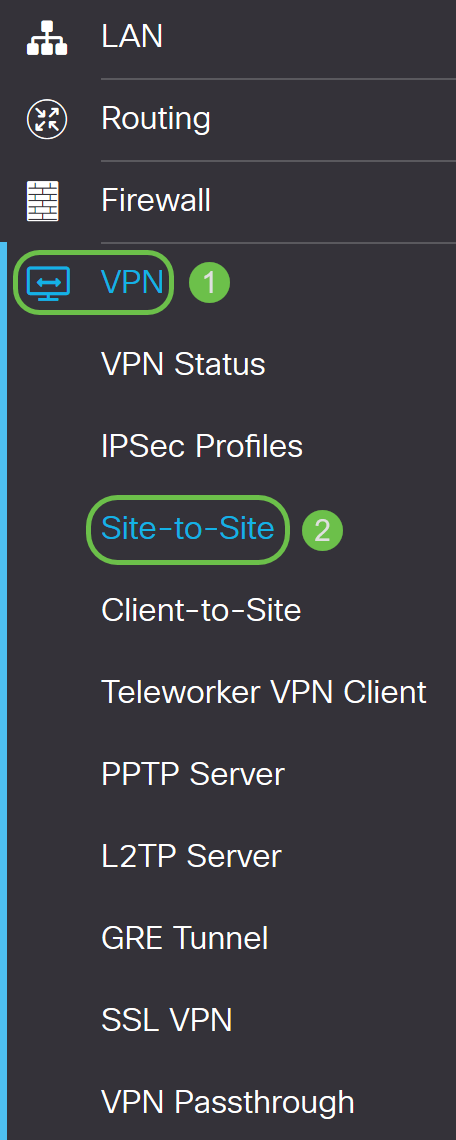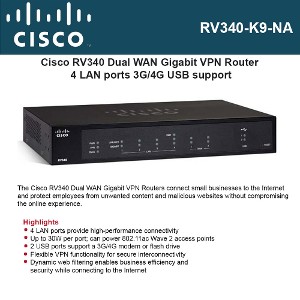Hello all,
Generally a good router and handles multiple VLANs well. However, the VPN supports IPSEC only in site-to-site mode and clients use OpenVPN with a single set of credentials for all clients that cannot be canceled. So, you do need to install the OpenVPN client instead of using IPSEC for any clients. OpenVPN windows Client to RV340 Apparently, i have many options on how to build a VPN from windows 10 to the RV340 (LT2P, Anyconnect etc) but I am inclining towards OpenVPN with Site-to-Server VPN. (my corp laptop supports it, secure enough, split tunneling possible, no extra licenses required).
Jul 21, 2017 RV340 Dual-WAN VPN Router-Product Views Front Panel View. The front panel shows the model number, the Reset button and several LEDs for Power, VPN, Diagnostics, LAN, WAN, and USB. OpenVPN windows Client to RV340. Apparently, i have many options on how to build a VPN from windows 10 to the RV340 (LT2P, Anyconnect etc) but I am inclining towards OpenVPN with Site-to-Server VPN. (my corp laptop supports it, secure enough, split tunneling possible, no extra licenses required) Has anyone made this work, and how difficult is.

I thought it would be a good time to provide a quick update on our Cisco RV Series. As amazing as Rafael Nadal is as he took his 10th French Open yesterday at Roland Garros, our new RV340 Series models continue to amaze as they make their way to your local Cisco Partners!
Well the two thoughts may not be that close in scale, but we certainly do continue to hear how well people are liking their new RV340 and RV345 models. The new models possess the performance, reliability and ease-of-use that most products of their kind can not tout. It is this combination of features, security, performance, value, warranty and support that demands attention from our partners and customer alike.
All models offer Dual WAN ports for load balancing and failover, plus USB LTE modem connectivity for additional failover or pure LTE connectivity. There is support for the Cisco AnyConnect Security Mobility Client, which is ideal for remote access for mobile devices. Read up on each model on the above web links.
Now the fun part, the Cisco RV345P and the Cisco RV340W are about to hit the market. The PoE model and our wireless model will hit the channel in a couple of weeks. Also, we do have a new Wireless Access Point making it’s way to the market, it is called the WAP125 – but much more on all three of the new models coming soon, very very soon!
Remember to take a look at Cisco FindIT.
That was a quick update, but rest assured, we have been quite busy getting things done! Spillo.
Have a great week!
The Small Business Team
Cisco Rv340 Client To Site Vpn Setup



Meraki Site-to-site VPN makes it easy to connect remote networks and share network resources. In the event that VPN fails or network resources are inaccessible, there are several places to look in Dashboard to quickly resolve most problems. This article will overview common site-to-site VPN issues and recommended troubleshooting steps.
Troubleshooting
If there appears to be an issue with VPN, start by referencing the Security & SD-WAN > Monitor > VPN status page to check the health of the appliance's connection to the VPN registry and the other peers. If one specific tunnel is having issues, it may be helpful to check the status page for the networks of each peer in case one of them is offline or disconnected from the registry:
Rv340 Vpn Client To Site Free
The following sections outline common issues with site-to-site VPN and recommended troubleshooting steps:

Can't ping or access network resources on the other network
If you are unable to connect to devices on the other network from your site:
- Are both devices online and connected to the registry?
- As outlined above, be sure to check the Security & SD-WAN > Monitor > VPN status page for each side's Dashboard network.
- Is the subnet you're trying to reach advertised over VPN?
- On the remote side's Dashboard network, navigate to Security & SD-WAN > Configure > Site-to-site VPN. Under Local networks, make sure the Use VPN toggle is set to Yes for the subnet you're trying to reach.You should also check these settings on your local site's Dashboard network to ensure that the subnet you're connecting from is also advertised.
- If using a full tunnel configuration, bear in mind that when specifying a prefix to be part of a VPN, everything covered by that prefix will be allowed in the VPN. Therefore, subnets that overlap will cause traffic in a more specific subnet to be sent through the VPN, even if it is not configured to be included in the VPN. For example, if 10.0.0.0/16 is configured to be included in the VPN but 10.0.1.0/24 is not, traffic sourced from 10.0.1.50 will still be sent over the VPN.
- Are any firewalls blocking this traffic on the network?
- In addition to any non-Meraki firewalls on the network that may be blocking this traffic (including firewalls that may be enabled on the device you're trying to access), check the Security & SD-WAN > Configure > Site-to-site VPN > Organization-wide settings section to see if there are any Site-to-site outbound firewall rules.
- Are there any problems reaching out to non-VPN peers?
- Try sending pings or traceroutes to public IPs (such as 8.8.8.8) or access public websites to see if the problem isn't strictly related to VPN.
- Try pinging the public IP of the other MX from your local network. If this fails but general Internet connectivity appears to be fine, there is likely an upstream ISP routing issue that is preventing the two sites from communicating directly even though they both have Internet access and are connected to the VPN registry.
- Are there routes configured on both sides that point to the remote subnets?
- If the MX is not the only gateway in the network (e.g. the MX is connected to a layer 3 switch or router with its own directly connected networks), any devices that are not using the MX as their gateway will need their traffic routed to the MX in order to send traffic across the VPN. Make sure any other routing devices on the network have a route that allows them to access the remote VPN subnets via the MX's local IP address.
- For extensive details on deploying the MX as a VPN concentrator, please refer to our VPN Concentrator Deployment Guide.
- Are these devices on non-overlapping subnets?
- If the device on each end is on a subnet that overlaps with the other side, the MX will be unable to route traffic to the other side as it will believe the traffic is destined for the local network. It is recommended to have unique subnets with no overlap on each network connected to the VPN.
- If identical networks are required on each side of a tunnel, you may need to enable VPN Subnet Translation. Please note that this feature does not allow for partial overlap between subnets, and is not supported with non-Meraki VPN peers.
VPN status page reports an unfriendly NAT or disconnected from VPN Registry
If the Security & SD-WAN > Monitor > VPN status page for a given network reports either 'NAT type: Unfriendly' or 'VPN Registry: Disconnected', there is likely a device upstream of the MX for that site that is preventing AutoVPN from working correctly.
- NAT type: Unfriendly indicates that the upstream NAT won't allow the MX to use UDP hole punching to form the tunnel. It is recommended to set NAT traversal to Manual: Port forwarding to bypass this issue.
- VPN Registry: Disconnected indicates that the upstream device is not allowing the MX to communicate with the VPN registry. It is recommended to configure any upstream firewalls to allow the traffic listed in Dashboard under Help > Firewall info.
For more information on these two error messages and VPN registry troubleshooting in general, please reference our documentation regarding Troubleshooting VPN Registration for Meraki AutoVPN.
Vpn Client Download
Problems with VPN between Meraki MX/Z-series and a non-Meraki peer
If you are having issues with a non-Meraki VPN connection and the above troubleshooting tips did not resolve the issue, please reference our documentation regarding Troubleshooting Non-Meraki Site-to-Site VPN Peers.
